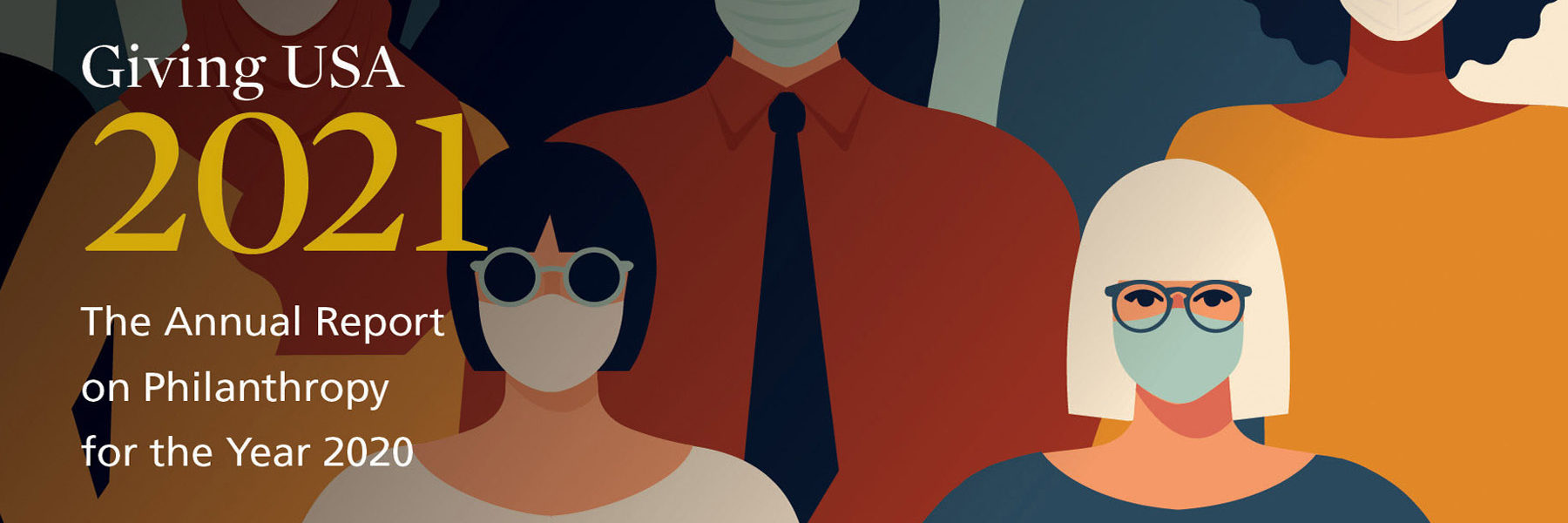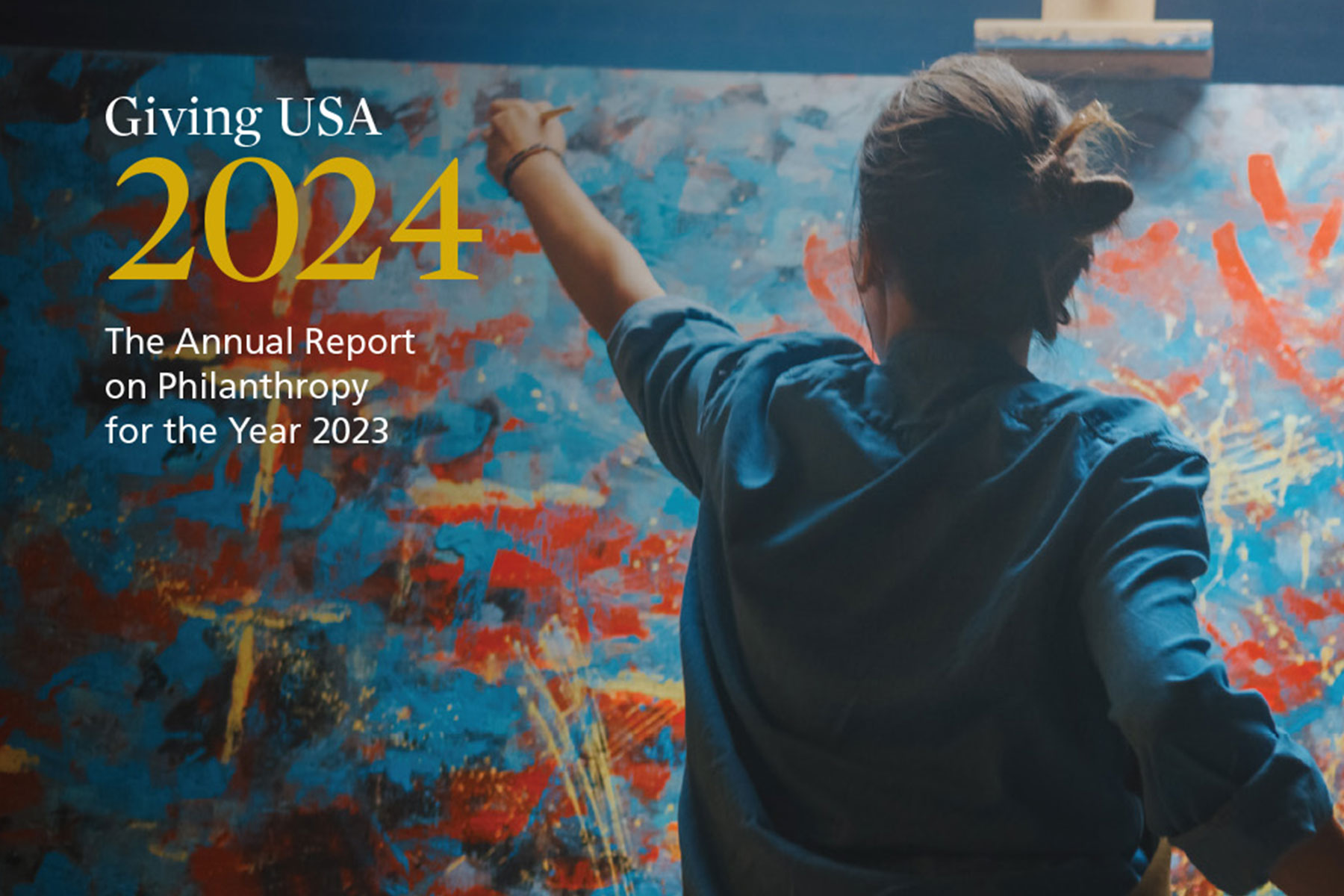Giving USA 2021 Report Insights
As one of the most comprehensive and widely referenced data reports, the Giving USA annual report is often met with equal amounts of immense anticipation and excitement for those in the philanthropic industry. This past year raised those levels to record heights as we waited to see the data behind a year unlike any in our history. Between the global and domestic repercussions of the COVID-19 pandemic and the social justice and political movements that rippled through the population, this data report sheds insight on the trends and impacts of this unprecedented year.
BWF is excited to share the key findings from this year’s Giving USA: The Annual Report on Philanthropy. Presented by the research team at the Indiana University Lilly Family School of Philanthropy and the fundraising professionals at Giving USA Foundation, the Giving USA report is the longest-running, most extensive report on philanthropy in the United States. BWF is proud to be a member of The Giving Institute.
Overall, despite a tumultuous year, total estimated giving rose by 5.1 percent between 2019 and 2020. Organizations and institutions needed to develop resiliency and agility, communicate creatively, and oftentimes alter their own structure or methods to adapt to the dynamic changes and constantly shifting conditions throughout the year.
Key Findings From the Report:
- The total estimated charitable giving reached a record-setting $471.44 billion.
- Giving by foundations saw the greatest increase (+17%), an all-time high, followed by giving by bequest (+10.3%) and by individuals (+2.2%). The only contribution source to decline in giving was corporations, at 6.1% less compared to the previous year.
- Seven of the nine subsectors grew in giving, and the majority saw increases by at least 8%.
- Top giving subsectors included public-society benefit (+15.7%), environment and animal (+11.6%), human services (9.7%), international affairs (+9.1%), and education (+9%).
- Smaller increases were found in giving to both foundations (+2%) and religion (+1%).
- Declines were seen in giving to arts, culture, and humanities, which decreased the most (-7.5%), and to health (-3%).
- GDP declined by 2.3% from 2019. However, the passage of the CARES Act and the possibility of an approved COVID-19 vaccine helped markets rebound in the second half of the year, when most charitable giving occurs. By the end of 2020, the S&P 500, which is closely related to giving, grew 16.3%, and personal income, a factor that is significantly linked to individual giving, grew 6.1%. Giving by foundations skyrocketed, giving by individuals and bequests showed growth, and giving by corporations, which is more closely tied to GDP, declined.
Implications and Impact
As we evaluated the findings, they led us to the following overarching insights:
- Most concerning but essential for planning is the continuing concentration of wealth and its impact on giving. The study showed that the growth in giving was largely shaped by individual gifts, and the top 10 donors gave almost $22B. Building and sustaining relationships with UHNW and even HNW individuals is likely going to become increasingly difficult but increasingly essential.
- Foundations responded strongly to pandemic-related initiatives, providing the funding that drove giving in the last year. As we move into a post-pandemic world, it will be important for nonprofits to consider what the implications are, if any, for foundations’ areas of focus and the amount of resources available to grantees.
- Corporate giving declined, and most found themselves addressing diversity, equity, inclusion, and justice issues head on in the wake of social unrest and heightened awareness of systemic racism and calls to once and for all address it. Many corporations will be reviewing their giving programs based on DEIJ considerations, which will likely impact particular appeals, grant opportunities, and campaign priorities.
- During 2020, a wide range of informal philanthropic behaviors by individuals (i.e., mutual aid efforts, person-to-person giving, and online giving—which reached its highest share of total giving on record) were all heightened. It will be worthwhile to track which of these more informal behaviors, if any, have lasting effects on giving going forward.
In summary, the key takeaways from 2020 are that charitable giving reached an all-time high of $471 billion as donors were moved by the suffering caused by an uncommon combination of pandemic, job loss, social and economic turmoil and growing awareness of racial inequality. Giving USA’s 2020 estimates provide a baseline for understanding where giving stood at the outset of the current crisis.




